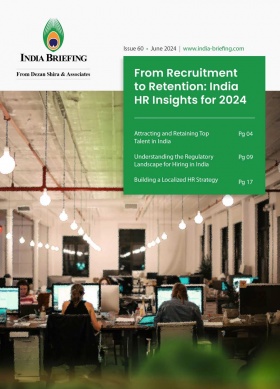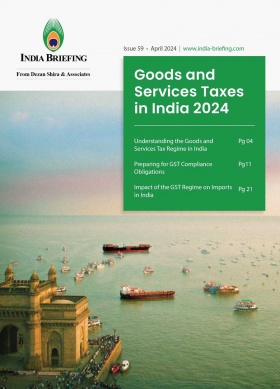Indian Steel and Metal Industry’s Shift Towards Renewable Energy
Indian steel and metal companies are reportedly increasingly securing renewable energy deals to reduce carbon emissions and avoid penalties under the European Carbon Border Adjustment Mechanism (CBAM).
There is growing pressure within India’s large steel and aluminum producers to adopt renewable energy and sustainable methods to help lower carbon emissions and the demand is now extending throughout the industry’s supply chain segment. Leading stainless-steel manufacturers in India are reportedly experimenting with alternative fuels, including green hydrogen and biochar, to lower their carbon emissions.
Businesses in India estimate that the earliest that new solar and wind projects can be delivered is by 2026 due to land and infrastructure constraints. Currently, there is a significant gap of around 10 gigawatts between supply and demand, a substantial figure given India’s total operational wind and solar energy capacity of 148 gigawatts as of June 30, 2024.
High demand for RTC green energy amid EU carbon tax concerns
Renewable energy companies in the country have noted that many of their clients are concerned about the EU’s carbon border tax. The combination of rising compliance demands for decarbonization and a shortage of renewable energy suppliers for industrial customers, including metal producers, has created a short-term capacity crunch. This scarcity is prompting companies to quickly secure deals with reputable energy developers, potentially leading to higher tariffs.
There is a strong demand for round-the-clock (RTC) green energy, which requires additional infrastructure like battery or hydroelectric storage to ensure constant supply. According to industry experts, RTC green energy will remain limited until 2027, when under-construction storage projects are expected to be operational. Until then, RTC power will rely on expensive battery storage systems.
Impact of the European Carbon Border Adjustment Mechanism (CBAM)
Since October 2023, the CBAM regime has been tracking the carbon emissions embedded in products imported into the EU, with taxes on excess emissions beginning in January 2026. Initially, this will affect six sectors:
- Iron and steel
- Aluminum
- Cement
- Fertilizers
- Electricity
- Hydrogen
Europe is a key market for Indian steelmakers, with India ranked as the second-largest steel exporter to the EU in 2023, exporting 3 million tonnes. However, Indian steel producers generate more carbon emissions than their competitors, with an average of 2.55 tonnes of CO2 per tonne of steel, compared to 1.6 tonnes produced by South Korean steelmakers. Indian steel companies were found to emit nearly 20 percent more CO2 than China, the second-largest polluter in the steel sector.
In the aluminum sector, Hindalco is on track to operationalize 300 megawatts of renewable energy by next year. Vedanta Group, India’s largest aluminum and zinc producer, has created Serentica to meet its renewable energy needs. Hindustan Zinc has even introduced a low-emission zinc product, produced using RTC renewable energy from Serentica, aimed at supplying steelmakers in preparation for the CBAM levies starting in 2026.
Despite relying heavily on carbon-intensive blast furnaces, Indian steelmakers are working to reduce emissions across their supply chains. Leading companies like Jindal Steel Works (JSW) and Tata Steel are investing in renewable energy projects. JSW is developing 2.2 gigawatts of renewable energy, while Tata Steel is partnering with Tata Power for similar initiatives.
Indian steel and metal industry’s push for low-carbon alternatives
Indian steel companies are piloting projects to reduce emissions through the use of alternative fuels such as green hydrogen and biochar. Companies like Tata Steel, JSW, Jindal Steel and Power Ltd (JSPL), and Jindal Stainless Ltd (JSL) are all involved in such efforts.
On September 14, 2021, Tata Steel announced it had established a carbon capture plant with a 5-tonnes-per-day (TPD) capacity at its Jamshedpur site. In February 2023, JSW implemented a 100-TPD carbon capture and storage system at its Direct Reduced Iron (DRI) plant in Dolvi, with the captured carbon being repurposed in the food and beverage industry. As of 2024, JSPL has set up a 3,000-TPD carbon capture unit in Angul, Odisha.
In August 2023, Tata Steel announced it is making further strides by injecting hydrogen into its steelmaking process, reducing CO2 emissions by 7-10 percent per tonne of crude steel. Jindal Stainless Ltd has launched a green hydrogen plant with a production capacity of 78 tonnes per year, intended for the annealing process.
Initiatives launched in India on carbon emission reduction
In a written statement submitted to the Indian Parliaments on July 30, 2024, Bhupathiraju Srinivasa Varma, the Union Minister of State for Steel, noted that while large-scale projects on carbon emission reduction have yet to be implemented, several pilot initiatives are underway.
India’s vision for FY2030 is to reduce carbon emissions through improved energy and resource efficiency and the greater use of renewable energy. Further, its mission for 2047 is to shift the focus to green hydrogen-based steel production and carbon capture, utilization, and storage (CCUS) technologies.
About Us
India Briefing is one of five regional publications under the Asia Briefing brand. It is supported by Dezan Shira & Associates, a pan-Asia, multi-disciplinary professional services firm that assists foreign investors throughout Asia, including through offices in Delhi, Mumbai, and Bengaluru in India. Dezan Shira & Associates also maintains offices or has alliance partners assisting foreign investors in China, Hong Kong SAR, Vietnam, Indonesia, Singapore, Malaysia, Mongolia, Dubai (UAE), Japan, South Korea, Nepal, The Philippines, Sri Lanka, Thailand, Italy, Germany, Bangladesh, Australia, United States, and United Kingdom and Ireland.
For a complimentary subscription to India Briefing’s content products, please click here. For support with establishing a business in India or for assistance in analyzing and entering markets, please contact the firm at india@dezshira.com or visit our website at www.dezshira.com.
- Previous Article ESG Reporting Mandates in India: Guidelines for Businesses
- Next Article India-Greece Bilateral Trade and Investment








